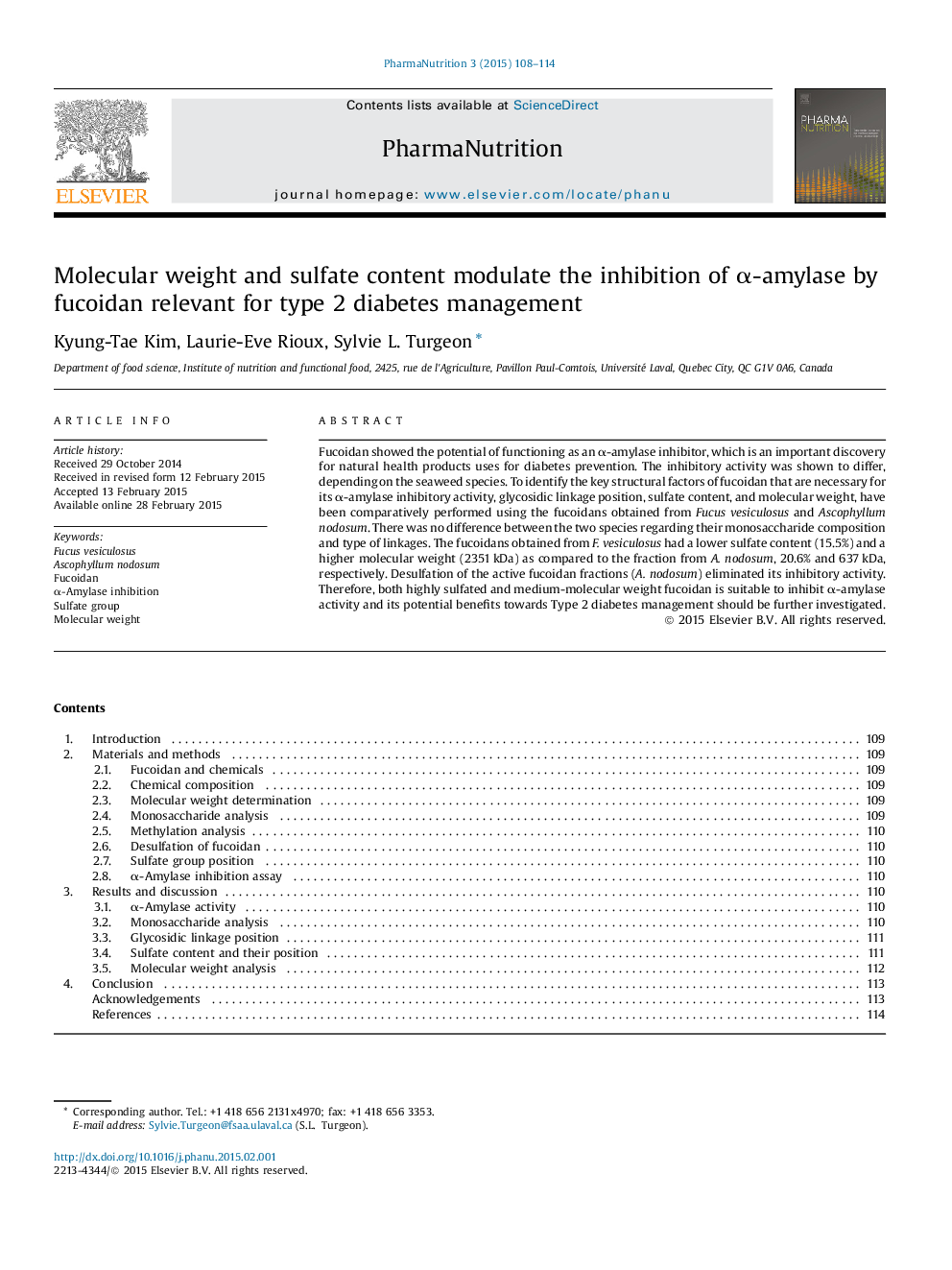| Article ID | Journal | Published Year | Pages | File Type |
|---|---|---|---|---|
| 5844168 | PharmaNutrition | 2015 | 7 Pages |
â¢Comparative structural investigation of fucoidans from F. vesiculosus and A. nodosum.â¢Similarities were monosaccharide, glycosidic linkage and sulfate groups position.â¢Low molecular weight and high sulfate content required to inhibit α-amylase activity.â¢Fucoidan-α-amylase electrostatic association could inhibit enzymatic activity.
Fucoidan showed the potential of functioning as an α-amylase inhibitor, which is an important discovery for natural health products uses for diabetes prevention. The inhibitory activity was shown to differ, depending on the seaweed species. To identify the key structural factors of fucoidan that are necessary for its α-amylase inhibitory activity, glycosidic linkage position, sulfate content, and molecular weight, have been comparatively performed using the fucoidans obtained from Fucus vesiculosus and Ascophyllum nodosum. There was no difference between the two species regarding their monosaccharide composition and type of linkages. The fucoidans obtained from F. vesiculosus had a lower sulfate content (15.5%) and a higher molecular weight (2351 kDa) as compared to the fraction from A. nodosum, 20.6% and 637 kDa, respectively. Desulfation of the active fucoidan fractions (A. nodosum) eliminated its inhibitory activity. Therefore, both highly sulfated and medium-molecular weight fucoidan is suitable to inhibit α-amylase activity and its potential benefits towards Type 2 diabetes management should be further investigated.
Graphical abstractDownload full-size image
